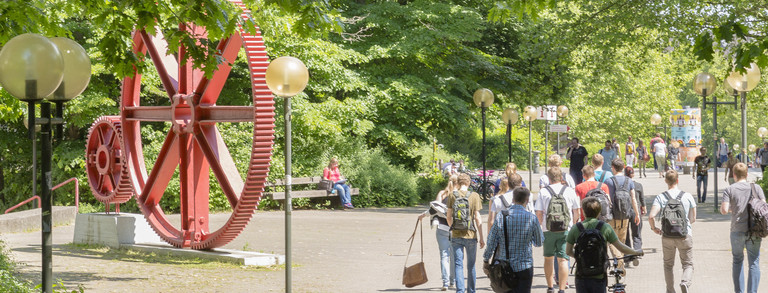Carbon Footprint – Reduction of Barriers to diminish Emissions
- Transport Modelling and Process Planning
FKZ: 3709 45 139
Background
Besides traffic avoidance, especially the transfer of freight transport to other modes represents an environmentally important measure to reduce the negative impact of transport on the environment. The research project, funded by the Umweltbundesamt (German Federal Environmental Agency, UBA), addressed the derivation of measures and strategies to promote alternative modes of transport. The focus of the research project was the user-driven definition of strategies and measures to close the gap between environmental relevance and practical implementation.
Procedure
For the realization of the research project, a three-step approach was chosen. In the first step, possible barriers regarding the shift of freight transport from road to the alternative modes of railway and waterway were compiled. In order to detect further potential obstacles, comprehensive literature research was carried out. The results of the literature research were supplemented by expert interviews to meet the practical and user-oriented approach of the project.
The extensive collection of shifting barriers was verified, evaluated and rated in the next step. This analysis of the individual barriers was carried out as part of an online survey in which 123 companies participated. Primarily, the survey aimed at loading companies and logistics service providers who can decide or at least encourage a shift of the mode of transport to be used. Also, the operational level, such as railway transport and railway infrastructure companies, shipping companies and terminal operators, participated in the survey. Thus, it was also possible to determine to what extent those actors can counteract the barriers of loading companies and logistics service providers.
In the third and final step, two workshops were conducted to define the causes of the major obstacles in a recursive process with representatives from industry and politics. On this basis, measures and recommendations were derived, which should be able to work against the barriers and promote the use of alternative transport modes.
Targeted results
In summary, it can be emphasized that the shift of freight transport is found to be an adequate measure to reduce emissions by loading companies and logistics service providers. Nevertheless, the practical realization is often not possible – despite large potential. This is mainly due to time and financial reasons.
However, it became clear that there is a consensus among experts: Implementing the right measures can counteract the barriers, encourage freight shifting from road to railway and waterway and thus, make an important contribution to green logistics.
Contact: Prof. Dr.-Ing. Uwe Clausen
Funding and partners







